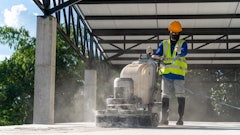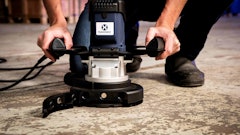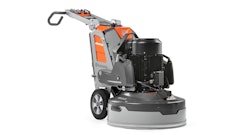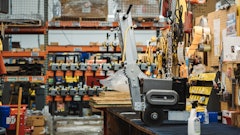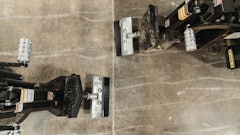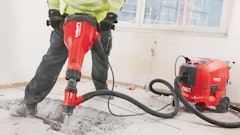
When a scraper blade loses its sharpness, floor removal time can double. A blunt blade is more likely to glide along the top of the floor, rather than pulling it up. This means workers have to take several runs at a length of flooring in order to remove it all.
The good news is that sharpening a scraper blade isn't a mammoth task — it takes no more than two minutes and standard blades can be sharpened using a hard stone rock or sandpaper discs. Carbide tipped blades have a longer life than regular steel blades and perform better where other blades fail, but the operator needs to be aware that when they become blunt, they have to be sharpened with a special carbide silica stone.
While users can expect to sharpen their floor scraper blades during a larger project, choosing the right blades in the first place will help extend their life and reduce maintenance time.
Shorter blades, such as National Flooring Equipment's 1-inch model, are designed for materials where the bond between the flooring and the concrete is extremely strong, such as vinyl composition tile (VCT) and adhesive re-scrape. They also work well for parking deck coatings, epoxies, and elastomeric coatings. This is because shorter blades have significantly more pressure per square inch and can break through strong bonds more effectively. If a longer blade was used for this type of flooring, it would dull much faster due to excessive pressure on the blade's edge.
The type of surface that the scraper blade will come into contact with also affects the life of the blade. Rougher concrete tends to dull blades much quicker than a smooth, trowelled surface. However, as there is little users can do about the surface underneath the floor, it's important to take the correct steps to increase blade life wherever else possible.
Users often try and correct the effects of dull blades by changing the angle of their machine. Increasing the angle between the machine blade and floor is a telltale sign that it's time to sharpen or replace a blade. Angling the blade may increase its effectiveness in the short-term, but contractors risk damaging the concrete underneath the floor and even breaking the blade as it hits the concrete at a higher angle.
This mistake is also common amongst first time users. We have seen many inexperienced contractors report that their machine is faulty, when in fact the blades just need sharpening.
Removing flooring in the wrong direction can also damage scraper blades. Floor joints tend to run in two directions — north to south and east to west. If a scraper blade hits these joints head on, it can become blunt or even break. Most floor removal experts will advise users to run their floor scraper from corner to corner to help avoid these joints and extend the life of their scraper blades.
At times, even industry professionals need guidance on maintaining their equipment correctly.

![Fcp Racatac Chair 10893876[1]](https://img.forconstructionpros.com/mindful/acbm/workspaces/default/uploads/2025/10/fcp-racatac-chair-108938761.10l0At5WXv.png?auto=format%2Ccompress&bg=fff&fill-color=fff&fit=fill&h=100&q=70&w=100)

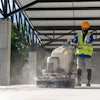
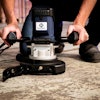
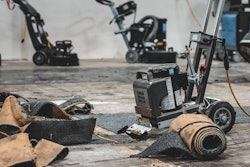
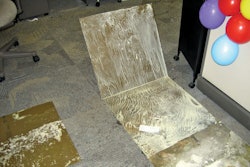

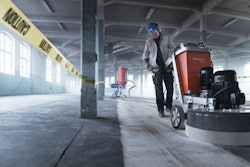
![Fcp Racatac Chair 10893876[1]](https://img.forconstructionpros.com/mindful/acbm/workspaces/default/uploads/2025/10/fcp-racatac-chair-108938761.10l0At5WXv.png?ar=16%3A9&auto=format%2Ccompress&bg=fff&fill-color=fff&fit=fill&h=135&q=70&w=240)

